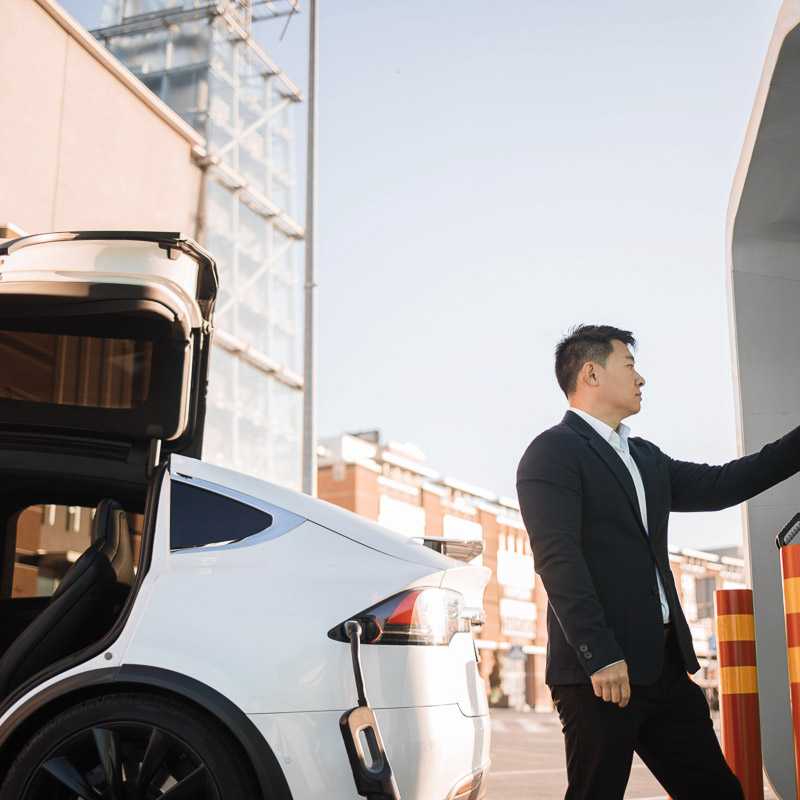

In just three years, China has swiftly emerged as the world’s largest exporter of passenger motor vehicles, overtaking Japan in 2023. According to China’s customs data, almost 25% of the vehicles exported last year were electric (EVs). The growth in China’s EV exports has been truly remarkable: while it exported fewer than 200,000 EVs in 2020, this number stood at an impressive 1.5 million units in 2023. This rapid growth has attracted global scrutiny, with both the United States and European Union significantly raising import tariffs on Chinese EVs in May-June 2024. Therefore, multinationals are increasingly concerned about the implications of the rise of Chinese EVs on bilateral trade relationships.
How Is the Rise of China’s Domestic EV Industry Unique?
China’s EV industry has historically been fueled by a number of drivers: surging domestic demand, rapid innovation in core technologies such as electric engines and lithium batteries and a long-term industrial policy fostering companies in strategic sectors. Starting in 2009, the national and local governments used a portfolio of favorable policies such as production subsidies, tax breaks, cheap land and loans, procurement contracts and R&D subsidies to support the development of domestic EV car makers. While the vast majority of state subsidies went into EV businesses that ultimately went under, a handful of companies survived the competition to become major players.
While favorable policies did support domestic supply and demand, other nations—despite having similar policies—have yet to achieve mass market EV adoption. One perspective considers China’s advancements in the development of EV infrastructure with EV adoption. For instance, the Netherlands also promoted EV adoption with tax breaks but found that taxi drivers were slow to purchase EVs over hybrid models out of concerns about shorter driving range and access to charging stations. In China, EV companies worked with taxi companies to encourage adoption by optimizing charging procedures for drivers, mapping out ideal locations and schedules for charging and developing a day-to-night dual-fleet taxi system in 10 major cities.
Another important factor in China’s EV growth is its advanced developments in battery technologies and access to natural resources. In 2022, China accounted for 70% of the world’s production of rare earths—core components in EV batteries—which has given it priority access to, and control of, the global EV battery supply chain. Battery cells are also the most important component of an EV and make up around 40% of the cost of a vehicle. Chinese companies have made important advances in lithium iron phosphate batteries, which were abandoned by foreign peers based on inefficiencies that Chinese researchers were able to address over time. This has resulted in China being uniquely positioned to control battery material supplies while producing high-quality and low-cost battery cells.
How Is the World Responding to Chinese EVs?
In recent years the EU has consistently been the largest destination for China’s EVs by volume, accounting for nearly 40% of exports in 2023. This has sparked concerns within the EU about potential threats to domestic EV manufacturers, leading to the decision to impose tariffs of up to 38.1% (on top of the existing 10%) starting on July 4, 2024. Earlier this year, the United States and Brazil also imposed their own import tariffs on Chinese EVs. Canada is currently also considering the need to do the same.
Conversely, other countries continue to welcome Chinese EVs, viewing them as an opportunity to reduce reliance on fossil fuels in their transportation systems and decrease greenhouse emissions. For instance, the Philippines extended its no-import-tariff policy on EVs until 2028 in May this year, and Thailand offers subsidies for EV purchases. Consequently, while seeking opportunities to manufacture EVs in their sales markets, Chinese EV makers are actively diversifying into other, more welcoming markets. In 2023, China’s EV exports to Thailand and the Philippines increased by 103% and 71% year-on-year, respectively.
What Does This Mean for Multinationals?
Chinese EVs are symbolic of greater changes in the global business environment, specifically in global trade patterns between China and the West. Multinationals should stay aware of potential impacts, including:
- Rising trade tensions globally and greater scrutiny of trade with China, especially in green energy sectors but with spillover effects into related industries.
- Chinese car makers and multinationals shifting focus to other markets like Southeast Asia to hedge risks while still advancing their outbound strategies.
- China’s evolving response to pressure from the West, including potential counter-tariffs and investigations.
- Western regulators using other methods as trade barriers to curb Chinese exports of EVs, such as global safety standards or data security concerns.
This article was co-written by APCO intern Jenny Li on the Shanghai team.


